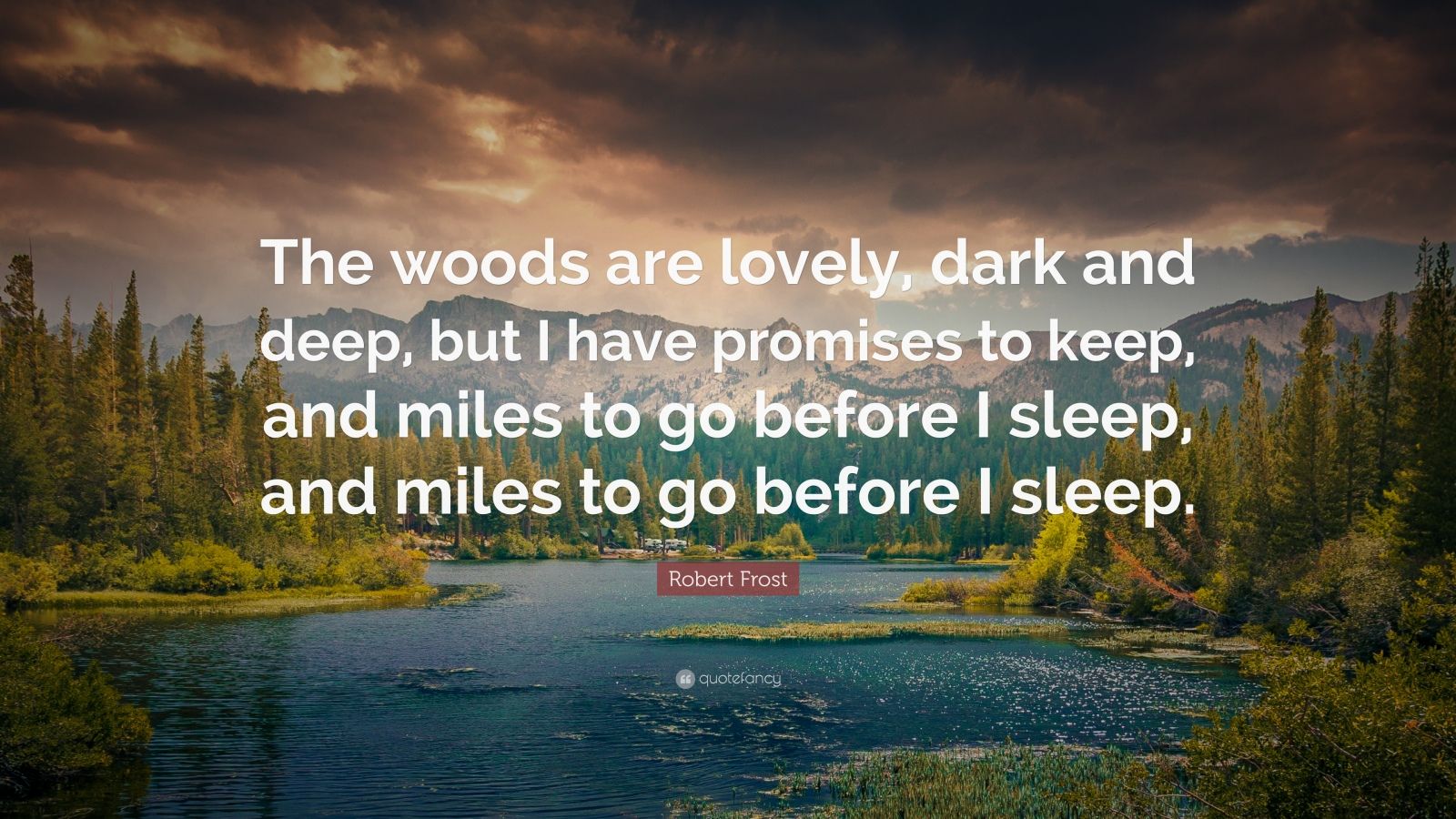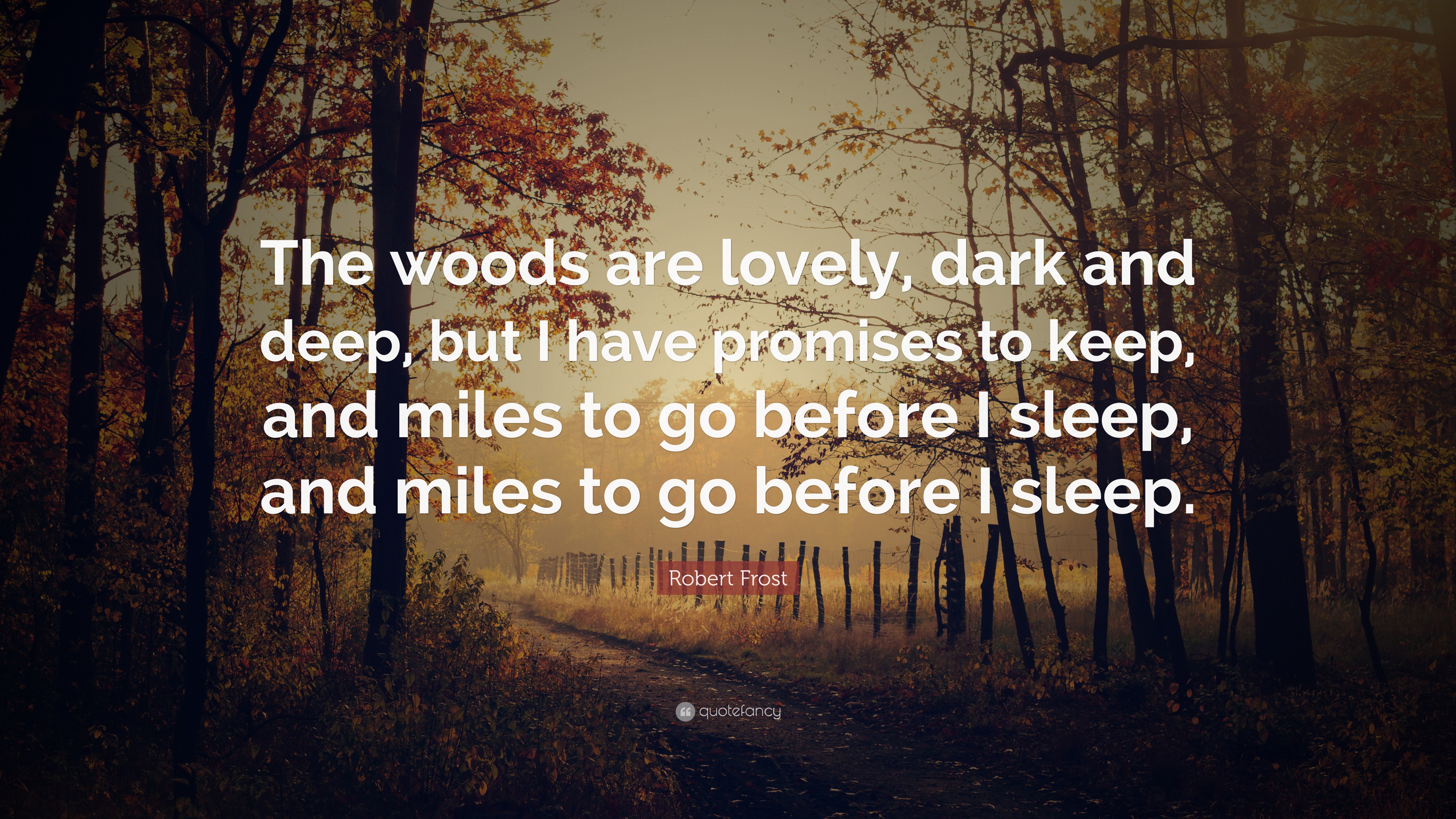

It is bleak as far as the eye can see, there is but a white expanse of fallen snow. The scene is one of absolute human loneliness. (For the practical ramifications of this distinction, see there.) The same physical pause may take on an entirely different meaning, depending on the intention behind it. The narrator stops by trees, on a snowy evening, to watch the “woods fill up with snow.” He seems suspended in the present, but where has he come from? Where is he going? The Talmud ( Shabbat 5b) distinguishes between two different types of “stops.” Some stop “to shoulder their burden” before continuing on their way others stop “in order to rest.” The former stop is merely a means to an end the Talmud doesn’t consider it a real standstill, while the latter stop is. The title “Stopping by Woods on a Snowy Evening” presents the scene. However, Frost blatantly holds back significant information – which has an unsettling effect. The poem is short, its subject unexceptional. Stopping by Woods on a Snowy Evening (1923) Let us now turn our attention to one of his most celebrated poems. Frost’s poetry reflects this: the distance from the city provides an opportunity to re-examine man’s relation to his original, natural environment. He resided in Vermont, New England – a rustic, quiet, peaceful place, far removed from the noise, pollution, stress and excitement produced by the Industrial Revolution. Time constraints dictate that we cannot fully analyze Frost’s poem using the latter method nevertheless, I shall offer a few words to provide a rough idea of the man, the period and the place that brought about this poem.

There are strong arguments in both directions – and, of course, the correct path is to find a balance between the two extremes.

Conversely, many notable academics have argued that we cannot hope to understand an artistic creation without first becoming familiar with the artist’s biography, psychology, and native culture.

We focus completely on the poem, the literary creation, as an isolated entity. Of course, we know that the poem has a historical background: it stems from the poet’s personality and experience, from the cultural and societal context in which it was written – but all that doesn’t interest us. Some hold that as readers, we should treat a poem as a self-contained entity. What is the proper way to relate to an artistic creation? This question is frequently raised by students of literature, and it concerns yeshiva students as well. S.Based on a sicha of Harav Aharon Lichtenstein zt"lĪdapted and translated by Netanel Hacohen Eliot Ted Kooser Terry Tempest Williams The Avett Brothers Tolkien W. Salinger Jack Gilbert Jack Kerouac Jane Hirshfield Jane Kenyon Jim Harrison Kevin Young Kim Addonizio Kim Dower life Linda Pastan Lisel Mueller Louise Glück Love Lyrics Margaret Atwood Marie Howe Mark Strand Mary Oliver Mother Naomi Shihab Nye Neil Gaiman Pablo Neruda Peace Philip Seymour Hoffman poetry Rainer Maria Rilke Rattle Ray Bradbury Raymond Carver Reader Favorite Reader Recommended Reading Repost Richard Jackson Richard Siken Robert Bly Robert Frost Ronald Koertge Ross Gay Rumi Sarah Kay Seamus Heaney slam poetry spring stardust Stephen Dunn Summer Sylvia Plath T.S. cummings Edward Hirsch Ellen Bass Emily Dickinson Faith Shearin Galway Kinnell Garrison Keillor Glen Hansard Gratitude grief J.D. Join 4,744 other followers Care to read through the archives? Care to read through the archives? Categories Categories Random Authors and Topics Alice Walker Ali Shapiro Anaïs Nin Andrea Gibson Anne Sexton Annie Dillard Billy Collins Brian Dean Powers Caitlyn Siehl Cats Charles Bukowski Cheryl Strayed Clementine von Radics Compassion czeslaw milosz Dana Gioia David Foster Wallace David Levithan David Shumate David Whyte death Dennis O'Driscoll depression dogs Dorianne Laux e.e.


 0 kommentar(er)
0 kommentar(er)
